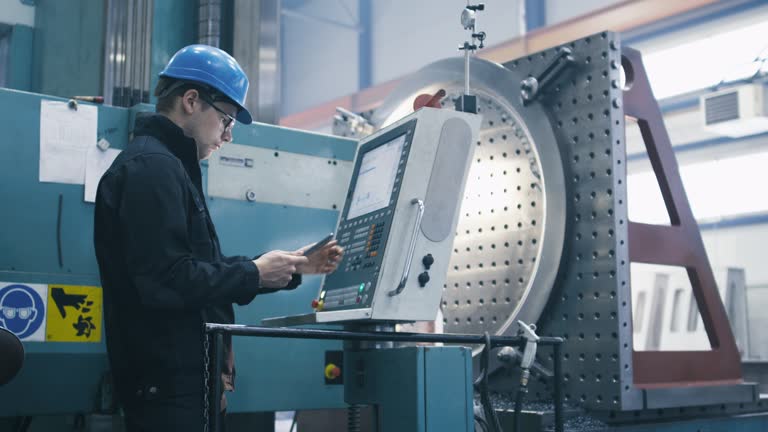CNC machines have brought a revolutionary transformation in the woodworking industry, allowing artisans, manufacturers, and DIY enthusiasts to create intricate designs with ease and precision. If you’ve ever asked yourself, “What is a CNC machine for wood?” then this guide is for you. We will explore everything from the basic concepts, the types of CNC machines used in woodworking, the software required, and how to use them for projects of all scales. By the end of this guide, you’ll have a clear understanding of how CNC technology shapes the woodworking industry today.
What is a CNC Machine?
Understanding CNC Machines
A CNC (Computer Numerical Control) machine is a sophisticated piece of equipment used for cutting, drilling, carving, and shaping materials by following computer commands. Unlike traditional manual woodworking tools, CNC machines are driven by software programs that control their movements, providing high precision and repeatability in operations.
CNC machines are essential in the woodworking industry, where they are used to produce furniture, cabinets, decorative elements, and custom projects. They reduce labor intensity, ensure accuracy, and allow for complex designs that might be impossible to achieve manually.
Key Components of a CNC Woodworking Machine
To fully grasp what a CNC machine for wood does, it helps to understand its components:
- Spindle: The spindle is the heart of the CNC router, rotating the cutting tool at high speeds to carve the material.
- Cutting Tool: Includes router bits, end mills, and drills. Each has a specific purpose, whether cutting, engraving, or hollowing out wood.
- Work Bed: The area where the material is securely fastened, often using vacuum suction or clamps.
- Control Panel: Allows operators to input settings and monitor the machine.
- Axes (X, Y, Z): Representing movement along the horizontal, vertical, and depth dimensions, these axes determine how the tool approaches the wood.

A high-quality spindle like the 2.2KW ER20 Air-Cooled Spindle ensures smooth and efficient cutting, crucial for achieving the desired outcome in CNC woodworking.
Types of CNC Machines for Woodworking
1. CNC Router Machines
A CNC router is perhaps the most common type of CNC machine used in woodworking. It is capable of cutting, carving, and shaping wood to create cabinet parts, signs, and decorative panels.
- Versatility: CNC routers can handle softwoods, hardwoods, plywood, MDF, and even certain plastics.
- Key Features: They often have multi-tool carousels for changing bits automatically, allowing for various cutting styles without manual intervention.
2. CNC Milling Machines
Though more commonly used for metals, CNC milling machines are also employed in woodworking for parts that require exceptional precision and detail. These machines differ from routers in the way they handle cutting paths and tooling.
- Material Compatibility: Works well with harder woods like oak and mahogany.
- Precision: Suitable for projects where accuracy is key, such as furniture joints and architectural woodwork.
3. CNC Laser Engravers
Laser CNC machines are ideal for engraving intricate patterns or making precise cuts. They can’t carve deeply like a router but excel at surface etching.
- Best For: Etching patterns, logos, or text on wood surfaces.
- Material Consideration: Ideal for softwoods, ply, and veneers.

For intricate cuts, the 24000RPM 1.5KW ER16 Water-Cooled Spindle is an excellent choice, providing precision and control suitable for detailed woodworking projects.
Applications of CNC Machines in Woodworking
1. Custom Furniture Making
CNC machines are widely used for producing custom furniture pieces. They allow manufacturers to create unique designs that fit specific needs or architectural styles.
- Cabinet Doors: CNC routers are used to carve out panel designs and moldings for cabinet doors.
- Tables and Chairs: Precise cutting and shaping allow for custom legs, backs, and other parts, adding character to pieces.
2. Sign Making
CNC routers are perfect for wooden signs—both commercial and personal. They can carve text, logos, and decorative borders into various types of wood.
- Raised Letter Signs: Letters are cut to stand out from the surface, often used for business or address signs.
- Engraved Signs: Letters and images are carved into the wood for a sleek, professional look.
3. Decorative Panels and Wall Art
CNC machines are excellent tools for creating decorative wall panels and wooden artworks. They provide the flexibility to make intricate designs, floral patterns, and geometric shapes that are challenging with manual carving.
- Laser Engraving: Adds intricate details to wall panels that would be difficult to carve by hand.
- Layered Panels: CNC routers can also create layered panels for a 3D effect.
Software for CNC Woodworking
1. CAD/CAM Software
CAD (Computer-Aided Design) and CAM (Computer-Aided Manufacturing) software are essential tools for creating and executing designs on CNC machines.
- Fusion 360: Widely used for both CAD and CAM processes, allowing for complete project control from design to machining.
- VCarve Pro: Specifically popular among woodworkers, this software simplifies the creation of carved signs and decorative elements.
2. G-Code and Program Execution
The design created in CAD software must be translated into G-code, the language that CNC machines understand. G-code controls the movement of the tool, spindle speed, feed rate, and more.
- Basic Commands:
- G00: Move the tool rapidly.
- G01: Perform a linear cut.
- G02/G03: Execute clockwise or counterclockwise arcs.
3. Simulation Tools
Simulation tools are built into most CAD/CAM software. They allow users to simulate the cutting process before running it on the actual CNC machine. This helps catch mistakes early, saving material and time.
Setting Up a CNC Woodworking Project
1. Selecting the Right Material
Choosing the right material is essential for getting the best results from your CNC project.
- Softwoods: Easy to cut and suitable for projects like wall art and decorative panels.
- Hardwoods: More durable, ideal for furniture and outdoor fixtures.
Tip: Consider the grain direction of the wood, as this will affect both the cutting strategy and the final appearance of the project.
2. Installing the Appropriate Tool
The tool used in a CNC machine for woodworking depends on the type of operation—cutting, engraving, or drilling.
- Router Bits: Used for cutting and carving wood; available in different shapes for various applications.
- V-Bits: Ideal for engraving detailed designs and lettering.
- End Mills: Suitable for cutting straight paths and hollowing out parts.
3. Clamping and Securing the Workpiece
To ensure accurate results, the workpiece must be securely clamped onto the workbed.
- Clamps: Provide a solid hold for larger and thicker wood pieces.
- Double-Sided Tape: Suitable for lightweight materials that might shift under heavy clamps.
Safety Tips for CNC Woodworking
1. Use Personal Protective Equipment (PPE)
Always wear safety glasses, ear protection, and dust masks when operating CNC machines. Wood dust and noise from the machine can be hazardous without proper protection.
2. Keep Hands Away from Cutting Area
Never reach into the machine’s work area while it is operating. Always wait until the spindle stops completely before adjusting or removing the workpiece.
3. Maintain the Machine Regularly
Regular maintenance is crucial to keeping your CNC machine functioning properly. This includes lubricating the moving parts, cleaning the workbed, and checking the spindle for wear.
Benefits of Using CNC Machines in Woodworking
1. Precision and Accuracy
One of the most significant benefits of using a CNC machine for wood is the accuracy it brings to woodworking. The use of G-code allows for precision that manual woodworking simply cannot match.
- Repeatability: CNC machines can produce identical copies, perfect for projects like cabinetry where consistency is key.
- Intricate Designs: Create detailed and intricate carvings with perfect symmetry.
2. Efficiency in Production
CNC woodworking machines allow for much faster production times. A CNC router can work for hours without needing a break, unlike manual labor.
- Reduced Waste: Precision means less material waste, saving money and resources.
- Batch Processing: CNC allows you to produce multiple pieces simultaneously, ideal for business scaling.
FAQs
1. What is the difference between a CNC router and a CNC milling machine?
A CNC router is primarily used for cutting softer materials like wood and plastic, while a CNC milling machine is better suited for harder materials like metals. CNC routers are often faster but less powerful compared to milling machines.
2. Can CNC machines be used for custom furniture projects?
Yes, CNC machines are ideal for custom furniture projects, allowing for precision cuts and custom designs that fit specific dimensions or unique requirements.
3. What software do I need to operate a CNC woodworking machine?
To operate a CNC woodworking machine, you need CAD/CAM software like Fusion 360 or VCarve Pro to design the project and generate the G-code needed to run the machine.
4. How do I choose the right spindle for my CNC router?
Choosing the right spindle depends on the material and the complexity of your project. For versatile woodworking projects, consider using the 24000RPM 3KW ER20 Water-Cooling Spindle for reliable and efficient performance.
5. What types of wood can I use in a CNC machine?
Most types of wood, including softwoods like pine and hardwoods like oak, can be used in CNC woodworking machines. The choice depends on the final application and desired durability.

